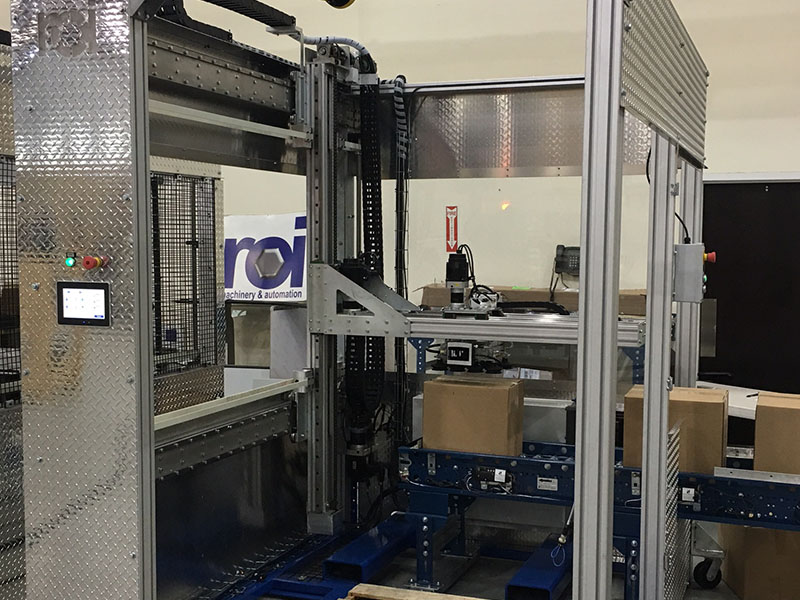State-of-the-art design, safe and efficient operation—robotic compact palletizers will revolutionize your palletizing functions.
Palletizing is an important function in any manufacturing setting. The ability to sort a number of SKUs quickly and palletize them accurately is a complex task. The line has to be efficient, it has to be able to be reconfigured quickly with little downtime, it must be simple to control, it should handle a number of different packaging and load configurations, and it must adhere to increasingly stringent safety requirements. Compact robotic-arm palletizing solves a number of these issues.
How Compact Robotic Palletizers Work
Robotic arm palletizers have been around for some time, and while early applications were inefficient and clumsy, technology has advanced to satisfy critical manufacturing functions safely and efficiently. Through the use of a configurable end of arm tool (EoAT), a robotic compact palletizer can handle one or more products and stack a pallet with precision. In-feed conveyors bring products to the compact palletizer area, and the robotic arm then stacks the products according to a preprogrammed procedure.
Why Are They Such a Great Solution?
Versatility – Since the EoAT is customizable, it can be adapted to almost any need using a vacuum and lateral to finger and magnetic grippers. They are designed to safely handle multiple types of containers at a time regardless of shape or weight.
Footprint – Equipment sizes may vary, but for the most part, robotic palletizers are compact and can fit in some tight warehouse spaces while still complying with safety standards. This means less floor space is dedicated to palletizing and conveying than would be required for automatic palletizing options.
Reduction in labor – When pallets need to be customized for special transport or for display purposes, oftentimes this needs to be handled manually. The robot arm can be programmed to handle this task automatically without the intervention of a manual palletizer.
Where Do They Work Best?
Low speed, simple cases – Robotic-arm palletizers are a great solution for simple, slower speed operations when the pallet is a simple case and when the infeed conveyor is running at a slow speed.
Low speed, multi-line case palletizing – A palletizing robot can simplify multi-line palletizing by eliminating the need for a complex upstream accumulation conveyor system. The robotic cell has room for multiple lines, allowing the arm to work on all loads simultaneously. While this option is slow, the palletizer can be programmed to combine multiple products into a single pallet.
Bag and pail palletizing – Clamshell tooling allows the arm to pick up bags without disturbing the contents or damaging the packaging. For pail palletizing, robots can achieve precision movements so the pails nest neatly on the pallet, allowing for easy and safe transportation.
Display loads – Demand is rising for palletized loads that arrive at the store with products stacked in a certain sequence to allow for easy stocking or configured for display. This requires a high degree of complexity and a programmable robotic arm is a practical solution.
Turn to ROI for Any Palletizing Need
Find out why so many companies trust our team to deliver high-quality palletizing solutions that streamline productivity, lower overhead and maintain high safety standards. Revolutionize your business with ROI.

